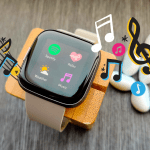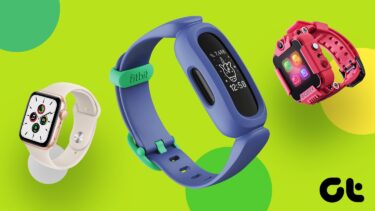The number of watches sold in 2015 admittedly marks a relatively large increase when compared to the 6.8 million watches sold in 2014. However, the growth of the smartwatch industry pales in comparison to that which the smartphone industry has experienced. In 2014, smartphone sales clocked in at about 1.24 billion globally. By then end of 2016 sales increased by 250 million to 1.4 billion units. By now you may be wondering why smartwatches, the companions of smartphones, aren’t doing as well as their counterparts. Well let’s explore this a little closer. First let’s take a look at why you would want to purchase a smartwatch in the first place. We will also look at the reasons why smartwatches may not be flying off of the shelves at the same rate as smartphones.
Benefits of Smartwatches
Smartwatches are portrayed by manufacturers as devices which can enhance the way you interact with your smartphone. Many of them have fitness tracking features. Below are some of the major benefits of owning a smartwatch.
Customization
Unlike a normal watch, most smartwatches allow you to easily change the look of your watch face. Users can pick a watch face they like based on their preferences.
Notifications at a glance
Smartwatches allow you to quickly filter your notifications from different apps on your smartphone. When you get a notification on your smartphone, this will be mirrored on your watch. You can quickly see which notifications are worth addressing immediately, which ones are worth putting off until later and which ones can be ignored completely.
Communicate Directly From Watch
Many smartwatches including Pebble’s offerings, the Apple Watch, and Android Wear devices allow you to respond to notifications directly from your watch. The Apple Watch even has a built in speaker and microphone which allow for the answering and making of calls.
Fitness Tracking
If you purchase a smartwatch today there is a good chance that it will have some degree of fitness tracking capabilities. With smartwatches on the market today, you can have anything from a pedometer to a heart rate monitor built into a watch.
Why have they still not caught on?
Despite the features available with today’s smartwatches, sales have not been as great as manufacturers would have hoped.
Price
Smartwatches are not cheap. At least this is the case for many of the available offerings today. Pebble was one of the outliers in this regard. Unfortunately they were forced to close their doors last year due to not selling enough units to remain profitable. However, many smartwatches are priced at $250 USD and above. Users find it difficult to reconcile spending this amount of cash on a companion device. The Apple Watch starts at a hefty $369 USD, while Huawei’s Watch 2 starts at $299 to put this into perspective.
Poor Battery Life
Despite the times reported by manufacturers, most smartwatches struggle to hit a battery life of 2 days or above. For example, the LG Watch Sport is rated for less than 2 days with even poorer results reported by buyers. The Huawei Watch 2 is rated at up to days while Apple reckons you can get 18 hours from their Series 2 Watch. Maybe this isn’t much of a deal breaker for some – I mean we charge our phones practically everyday – but for many it is.
Function Overlap/Not Enough Useful Apps
At the moment, while consumers are enticed by the idea of a smartwatch, it seems they find it hard to justify parting with their cash to purchase smartwatches. This is partially because many persons see the smartwatch as simply a device that mirrors the notifications you already get on your phone. How much harder is it to just take your phone out of your pocket? Even Google’s Vice President of Design, Matías Duarte, isn’t convinced of the necessity of the smartwatch at this point. Moreover, according to a report from Argus Insights, consumers enjoy the idea of smartwatches. However, when it comes to the apps used in conjunction with their smartwatches, their is a disconnect. Smartwatches, and wearable devices on a broader scale, collect a wealth of data. This is all well and good, but making sense of this data is the issue. Take fitness data collected for example. Without interpretation of this data to push consumers to really improve their lifestyles, the impact of smartwatches cannot be as great as it potentially could. This is lack of interpretation is listed as a major gripe for consumers in the report. The Argus Insights report also sites problems with syncing data between devices as a major source of frustration for consumers. Argus Insights analyzes consumer data from a variety of public and private sources. Their ‘insights’ are based on 13+ million reviews of more than 10,000 products and 130,000 retail SKUs in both consumer and enterprise markets.
Tips for The Smartwatch Industry
In order for the smartwatch industry to enjoy success on the level of the smartphone industry, things will need to be shaken up a little.
Price
It would be awesome to have more affordable devices but low prices are often linked to high volumes of sales. This makes it difficult to have affordable smartwatches if the number of sales aren’t high. Using more affordable materials and more efficient manufacturing processes can be considered in this regard however. Aside from price, to improve the number of sales, there are a few other things that can be done.
Better Battery Life
Although we charge our phones practically everyday, this isn’t really met with much protest. The same cannot be said for smartwatches. Having your smartwatch last for less than 2 days, furthermore less than 24 hours, is simply unacceptable. The expectation for longer battery lives may be related to the battery lives of traditional watches. These batteries will last for years before they need to be changed. Taking the functionality of a smartwatch into consideration however, a little over 2 days is a reasonable expectation for battery life. More efficient screens and operating systems can be implemented to achieve this. If manufacturers manage to pull of devices average above 2 days battery times, consumers will be sure to have a smile on their faces.
Smarter Software
According to the Argus Insights report, it’s well worth having software which offers suggestions to users on how they can improve their fitness on watches which support fitness data gathering. It’s also a no-brainer to resolve any syncing issues that pop up. Smarter software also means, making it easier to interact with apps, as it can be difficult to navigate apps on such a small screen. This is understandably a challenge for developers. With that being said, smartwatch companies need to head to the lab to improve on software.
Create More Female Friendly Devices
Even without improving any of a smartwatch’s features, there are benefits to designing smartwatches geared towards a female audience. Many women carry bags, where they store their phones. Women who do this would appreciate having the convenience of being able to view notifications or even make and take calls from a smartwatch without having to fish out their phones. However, many available watches are simply to big and clunky which can be a turn off for some women. They might however opt to buy a smartwatch if they were options designed to their preferences.
Final Thoughts
I personally own a Pebble Time smartwatch and love it especially because of the silent alarms and sleep tracking abilities. Being able to quickly view notifications and respond to them without even touching my phone is awesome. I can even control music from my watch. One of the major factors that inspired me to purchase it however, was the affordable price. I got it on sale for $99 USD last year. Like other consumers though, I am also not impressed by the price of some of the offerings on the market today for a device that relies on a smartphone to operate. However, this does not mean that the smartwatch industry is doomed. Improved software and better battery life could make a major difference in the adoption rate of smartwatches along with lower pricing and some design tweaks of course. The above article may contain affiliate links which help support Guiding Tech. However, it does not affect our editorial integrity. The content remains unbiased and authentic.




![]()












